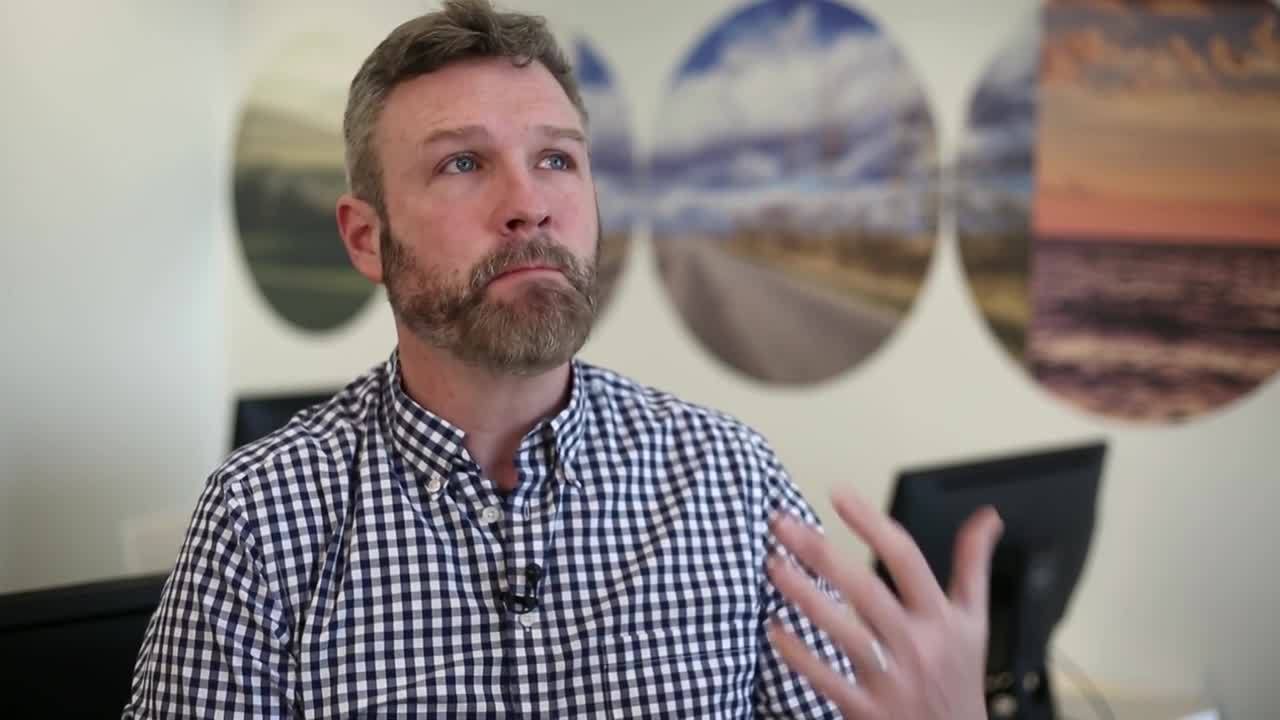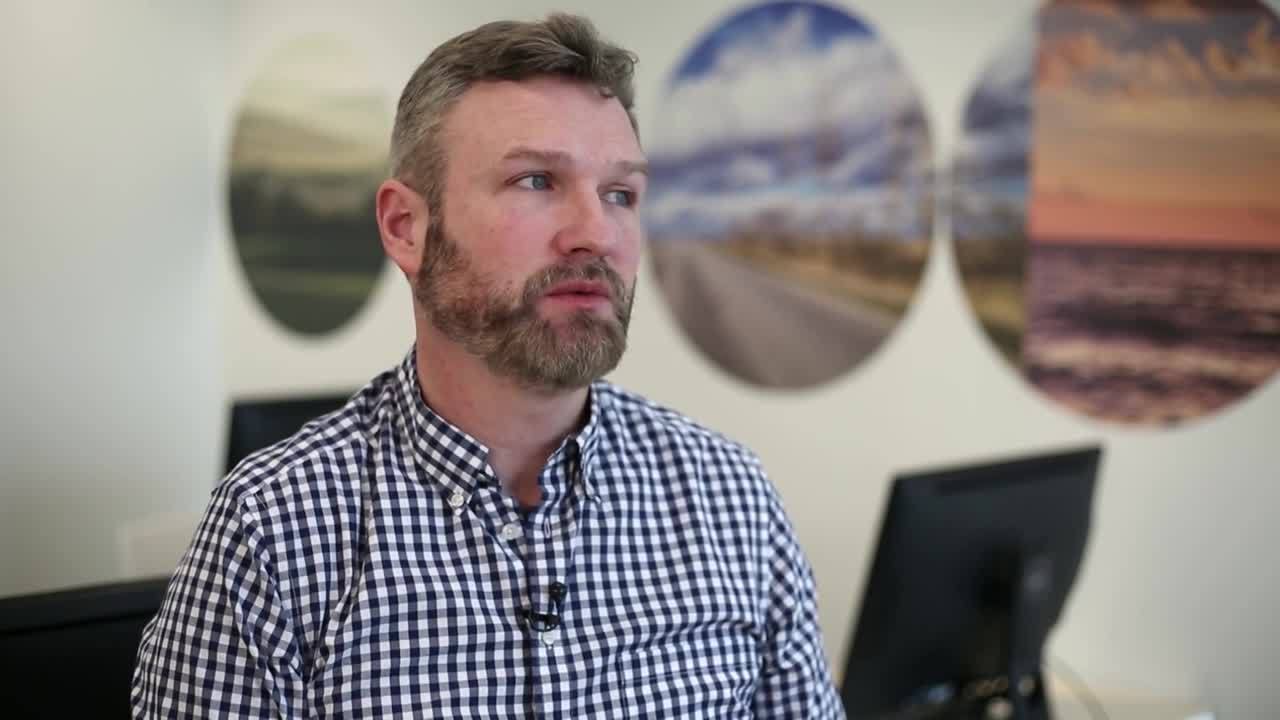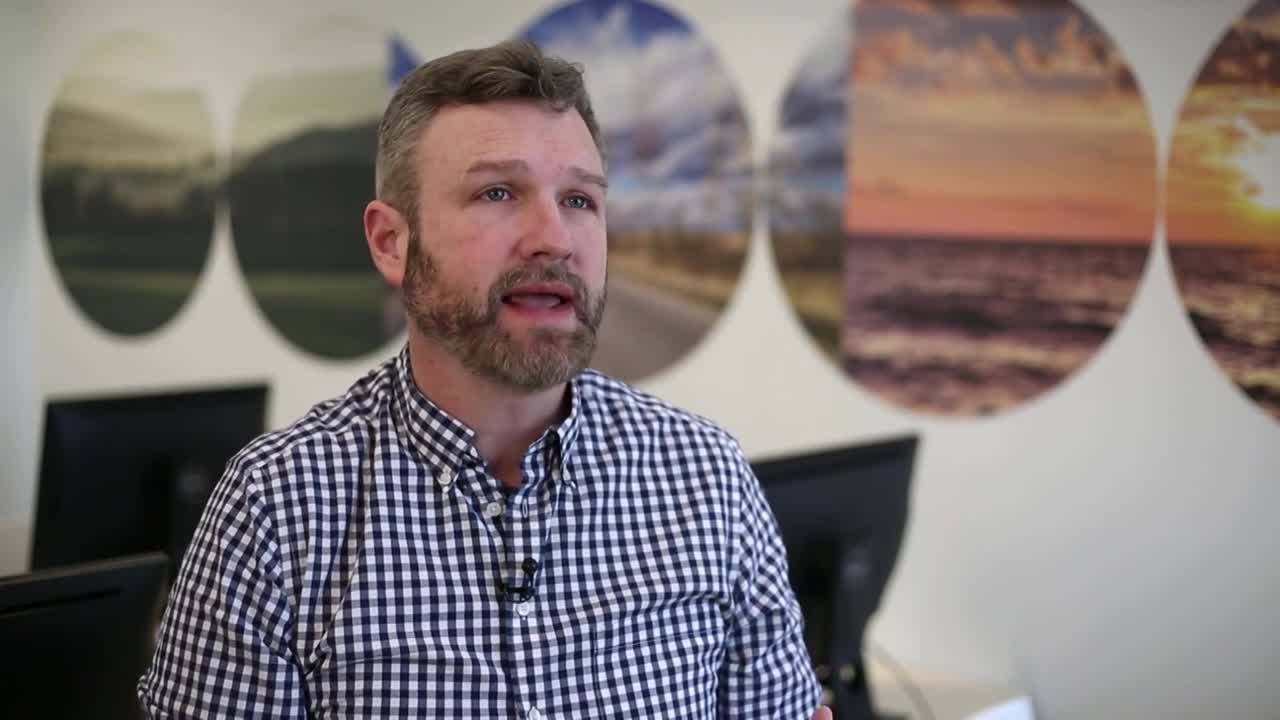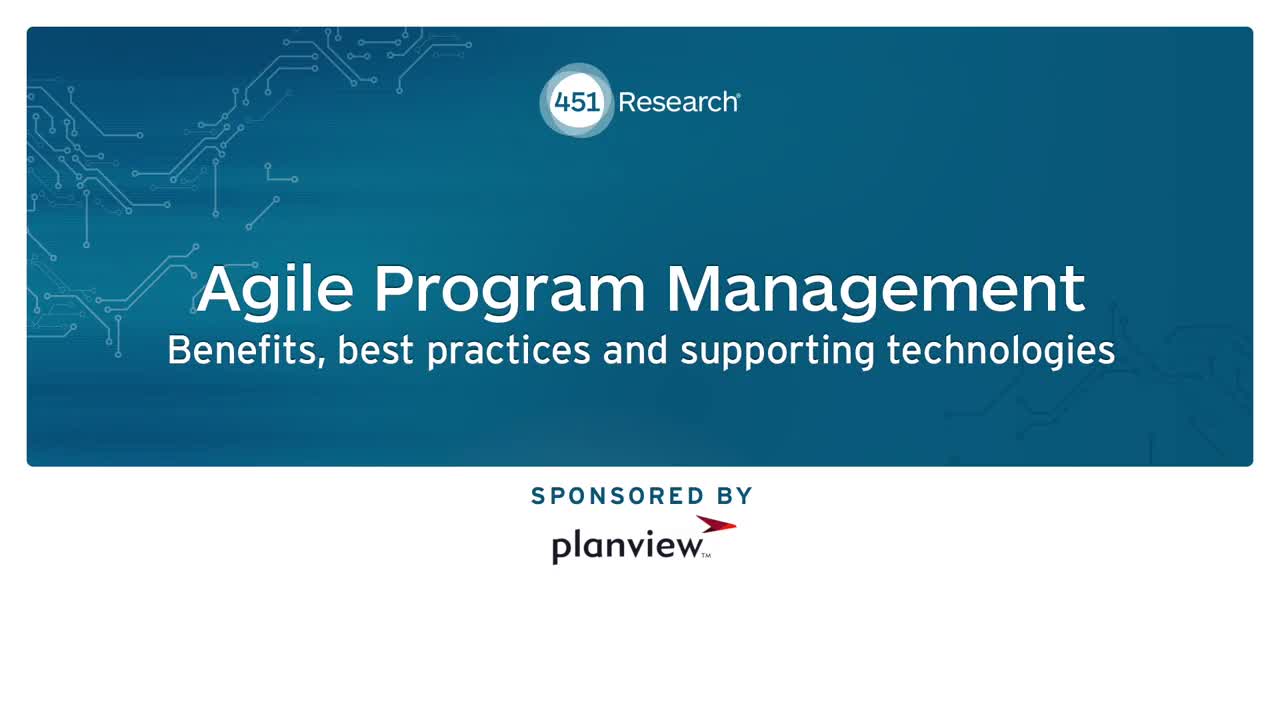Table of contents
The world of software development is fast-paced and results-driven. Time-to-market stressors create a work environment of constant changes and redirection. SAFe is a challenging model to implement but, when done well, can bring the velocity and efficiency that a company needs to stay competitive in this digital age.
Enterprise Agile Planning Demo
Watch the on-demand demo of Planview’s Enterprise Agile Planning software
Watch the solution demo • Enterprise Agile Planning DemoScaling Agile Delivery Demo
Connect disparate Agile planning and work tracking tools into a single consolidated system for better cross-team planning, coordination and dependency management. Or use our robust Enterprise Kanban solution for better team-level Agile planning and delivery.
Watch the solution demo • Scaling Agile Delivery Demo
Small to midsized development teams have embraced the Agile / Scrum and/or Lean development models over the past few years. But as teams and projects grow, SAFe’s scalability allows project managers to tackle the challenges of keeping multiple teams in sync and moving toward a deliverable product.
Managing projects and product development efficiently is crucial to market success. A company can have brilliant development teams, but if they are not clear on requirements and deadlines are missed because of miscommunication and rework, teams can become frustrated and the entire environment can fall into chaos; productivity and employee morale will suffer. SAFe’s scalability can be the answer.
So What is SAFe?

Learn about SAFe, a body of knowledge including Agile teaming practices, DevOps, Agile program management, and Lean Portfolio Management.
A Scaled Agile Framework (SAFe) helps development teams tackle the challenges of coordinating multiple teams, processes and programs to deliver a unified product.
“SAFe is not just a process definition, but an entire body of knowledge for scaling teams from 50 – 125 team members to thousands.”
Individual teams still number five to nine, but the quantity of teams in an Agile Release Train can be numerous. A large department with 10 or more teams running sprints and Scrums of Scrums can become unmanageable and disorganized. There is a point where leaders may want to consider transitioning to SAFe.
A considerable body of knowledge and years of case studies exist that can help new teams establish SAFe in their working culture successfully. There are also many options for onsite coaching and implementation guidance from certified professionals.
The business benefits of SAFe include the following:
- Quality – The Lean-Agile processes within SAFe can result in a 25 to 75 percent reduction in defects. Built-in quality checks ensure that the acceptance criteria are met and the product delivered meets quality standards.
- Productivity – Teams are more engaged and have a sense of accomplishment. Excellent communication and practices means less wasted work and rework. Teams have seen 20 to 50 percent increases in productivity when moving to the SAFe framework.
- Engagement – Employee engagement in the field of software development is like a winning sports team of a well-oiled machine. When all the parts are moving in the same direction and in sync, great things happen.
- Time-to-Market – When the market demands a quick upgrade or a creative change, SAFe can ensure the team moves as a focused unit toward the common goal. SAFe can help a team move at a velocity that will help the business meet its market goals. Some teams have reported 30 to 75 percent faster time-to-market, as reported by Scaled Agile Framework’s website.
Pain Points for Growing Teams
As businesses struggle to keep up with the fast-paced world of software and application development, extensive research is being done to determine the best processes for product development and the development culture. Product managers and development teams battle to communicate requirements, deadlines, and progress between one another and the stakeholders. Many choose one form of Agile development model or the other. While many choose Scrum for its ceremonies and transparency, others will still have some focus on the product more than the team and will choose the Lean development model.
After the development teams have done the work to implement Agile Scrum or Lean development across their departments and the process becomes second nature, the teams will often come up against the following pain points associated with Scrum / Lean rules and procedures for larger teams and larger projects:
- Teams are growing in number and work may not be synchronized to the common goal.
- Agile Scrum and Lean processes are not designed to scale up to meet the needs of the growing product load.
- More extensive projects with numerous features are often broken down into random parts just to get them to fit within the confines of a Sprint.
- When quality and velocity suffer, teams lose faith in the processes as a whole.
Keep in mind there is always the inclination to blame the size of the teams, when the problem instead may be the result of poorly implemented Scrum. Moving to SAFe when the teams are already having issues with self-management only multiplies the problem on a grand scale.
The most critical step for a team looking to move from Agile Scrum to SAFe is to understand it is not always a foregone conclusion that if you have a large operation, SAFe is the answer. It is imperative that teams have a good foundation and understanding of Lean-Agile principles before implementing SAFe.
How Does SAFe Address Pain Points?
Clear definitions of roles and processes
The SAFe website has free resources for questions and tools to help solve problems that other teams have already conquered.
- Glossary of Terms – definitions and in-depth explanations of concepts
- Process Maps – visual aids for explaining and understanding concepts and processes
Configurable and scalable process
SAFe can be implemented for large projects and larger teams by merely adding a layer to the process map. The map helps a team to visualize how the different teams work together, and an individual’s role does not necessarily change as the process grows.
The Agile Release Train (ART)
The ART is an appealing concept that allows Scrum and Lean teams to see the advantages of the process alignment that the Program and Portfolio processes expand upon as the team grows.
How Does SAFe Work? First Steps for a Team

At the portfolio level, we move from plan vs actual to focusing on outcomes; we need funnel metrics that suggest we are moving in the right direction.
Teams coming from an Agile Scrum or Lean implementation (or some combination of the two) will need to understand the terminology within SAFe. Titles such as Program and Portfolio are familiar enough that their application within SAFe needs to be detailed to make sure the teams are speaking the same language.
Let’s define some of them here:
- The Agile Release Train (ART) – ART is a long-lived team of Agile teams, which, along with other stakeholders, develops and delivers solutions incrementally, using a series of fixed-length iterations within a Program Increment (PI) timebox. The ART aligns teams to a common business and technology mission.
- DevOps – DevOps is a mindset, a culture, and a set of technical practices. It provides communication, integration, automation, and close cooperation among all individuals needed to plan, develop, test, deploy, release, and maintain a Solution.
- Epic – Epic is a container for a Solution development initiative large enough to require analysis, the definition of a Minimum Viable Product (MVP), and financial approval prior to implementation. Implementation occurs over multiple PIs and follows the Lean startup “build-measure-learn” cycle. (Note that this definition is very different from the definition used by Agile Scrum.)
- Essential SAFe configuration – The Essential SAFe configuration is the heart of the Framework and is the simplest starting point for implementation. It’s the basic building block for all other SAFe configurations and describes the most critical elements needed to realize much of the Framework’s benefits. In the latest version of SAFe 5.0, Program and Team Level are now collapsed into one view, creating a more comprehensive and streamlined version of Essential SAFe.
- Features – A Feature is a service that fulfills a stakeholder need. Each feature includes a benefit hypothesis and acceptance criteria and is sized or split as necessary to be delivered by a single ART in a PI.
- Portfolio Level – The Portfolio Level contains the principles, practices, and roles needed to initiate and govern a set of development Value Streams. This is where strategy and investment funding are defined for Value Streams and their Solutions. This level also provides Agile portfolio operations and Lean governance for the people and resources needed to deliver solutions.
- Program Level and Team Level – In the latest version of SAFe 5.0, Program and Team Level now combine to create Essential SAFe. This new configuration contains the roles, activities, events, and processes to deliver via Agile Release Trains (ARTs) and teams of Agile teams.
Configurable SAFe

Learn about two types of transformations in which Planview is involved: Essential SAFe and Lean Portfolio Management.
The beauty of the SAFe process maps is that team members can see where they and their team fit in the process. As the team grows or more levels are added, the individual doesn’t have to relearn or retrain. The team’s momentum doesn’t have to take a hit to grow.
The foundation of SAFe is the Essential SAFe model. This map will be familiar to teams with either a Lean or Agile Scrum background. This streamlines the conversion from these cultures to the SAFe model.
There are four levels of SAFe:
- Essential SAFe
- Large Solution SAFe
- Portfolio SAFe
- Full SAFe
Since this article focuses on getting started with SAFe, it will focus mainly on Essential SAFe. The other levels are covered extensively with other resources on the Scaled Agile Framework website.
Essential SAFe is the ground floor on which most teams start their SAFe development journey. Teams can pick up the familiar parts from their current processes and begin using the Agile Release Train (ART) to coordinate the teams on a program.
The Team and Program levels are the initial building blocks of the ART. Together with Product Management, Business Owners and Stakeholders, the team builds features or projects as part of the Program and the release of a Minimum Viable Product (MVP).
SAFe can scale up for myriad situations. While the focus here is geared more toward a software development process, SAFe can be used in many different industries and processes, from manufacturing to content development and creative design.
Essential Elements for Success
As with Scrum and Lean implementations, many organizations will take items from the process that help them, but they may leave other parts out. This can lead to a loss of efficiency or a total failure of the process.
The Scaled Agile Framework outlines the following elements as essential to SAFe success:
- Lean-Agile Principles – SAFe is grounded in the same Lean-Agile Principles. These principles are the foundation for SAFe as much as they are in Lean-Agile development.
- Real Agile Teams and Trains – As with any Agile team, they must be cross-functional, self-organizing, and self-managing. Product Owners, Scrum Masters, and other leaders have their roles to fill to help the team meet their goals and objectives.
- Cadence and Synchronization – An Agile team’s velocity in Scrum becomes the cadence of a SAFe team. The Agile Release Train allows this cadence to synchronize with the other teams to reach a common goal and release a viable product.
- Program Iteration (PI) Planning – A Program Iteration is a set of iterations in development that results in a piece of working and tested software. Proper PI planning is the only way to ensure all the teams are working on the necessary parts of the working program.
- DevOps and Releasability – The relationship between Dev Teams and Operations is a crucial foundation block for smooth development and quality. Releasability focuses on the quality of the product at the end of the development cycle to ensure that it is a releasable product. Together, these ensure frequent releases of a valuable product to the customer.
- Systems Demo – The primary measure of success is the demo to the stakeholders. This is how the teams know if their PI has been a success. This delivery to the stakeholders for feedback allows the team to inspect and adapt their planning and processes for the next round of development.
- Inspect and Adapt – This is an essential step in the Agile process. This step allows the team, along stakeholders and product owners, to evaluate the prior PI and make the necessary changes to increase velocity and ensure quality and reliability for the next PI.
- IP Iteration – The Innovation and Planning iteration is a bugger that helps a team improve for the next PI. This iteration provides the time needed for innovation, planning, and continuing education so that the teams improve and evolve.
- Architectural Runway – This refers to existing assets for the team to use as they are developing a feature. These can include code bases, hardware, and infrastructure resources necessary to support the teams during high priority and critical feature development.
- Lean-Agile Leadership – The leaders at the enterprise level must take responsibility and support the process. This can include obtaining the proper training to understand and promote the team.
SAFe 5.0 and Business Agility
The newest version of SAFe® (5.0) expands the framework beyond business operations to embrace full business agility.
“Business agility happens when the entire organization – business and tech leaders, compliance, development, finance, legal, marketing, operations, sales, security, support – uses Lean and Agile practices to continually and proactively deliver innovative business solutions faster than the competition.” Scaled Agile, Inc.
The latest updates to SAFe 5.0 include:
- SAFe for Business Teams
- Two new Competencies – Continuous Learning Culture and Organizational Agility
- Principle #10 – Organize Around Value
- Program and Team Levels combined into one level: Essential
Not only do people within the business need to know how their work supports the overall business goals and objectives, they need a better structure to deliver work more effectively. As the business embraces delivering customer value, it can now think about how to structure the people accordingly. The best way to do this is to organize the business into value streams – cross-functional, Agile Release Trains (including all parts of the business) – all focused on delivering the highest value work first, iterating, learning, and adjusting accordingly but together.
Conclusion

See why Planview is a great fit for the SAFe framework as a platform partner.
Given the potential for SAFe to minimize common pain points, improve processes, increase quality and productivity and reduce time-to-market for companies, it may be beneficial for teams to consider making the transition. As the process evolves in the digital market, it will only become a stronger framework for handling the volatile market conditions and customer demands in tandem with emerging technologies.
Examine and strengthen your teams’ adherence to Agile Lean Principles and then invest in the time and training to make a strong step toward the Essential SAFe model and then on to the larger models as your business grows.
The popularity and support for the SAFe framework brings with it an industry of tools to help your team manage everything from your iterations to your entire portfolio. There is a wealth of knowledge available from coaches and companies that have already made the change. All of these are a resource to you and your team.

